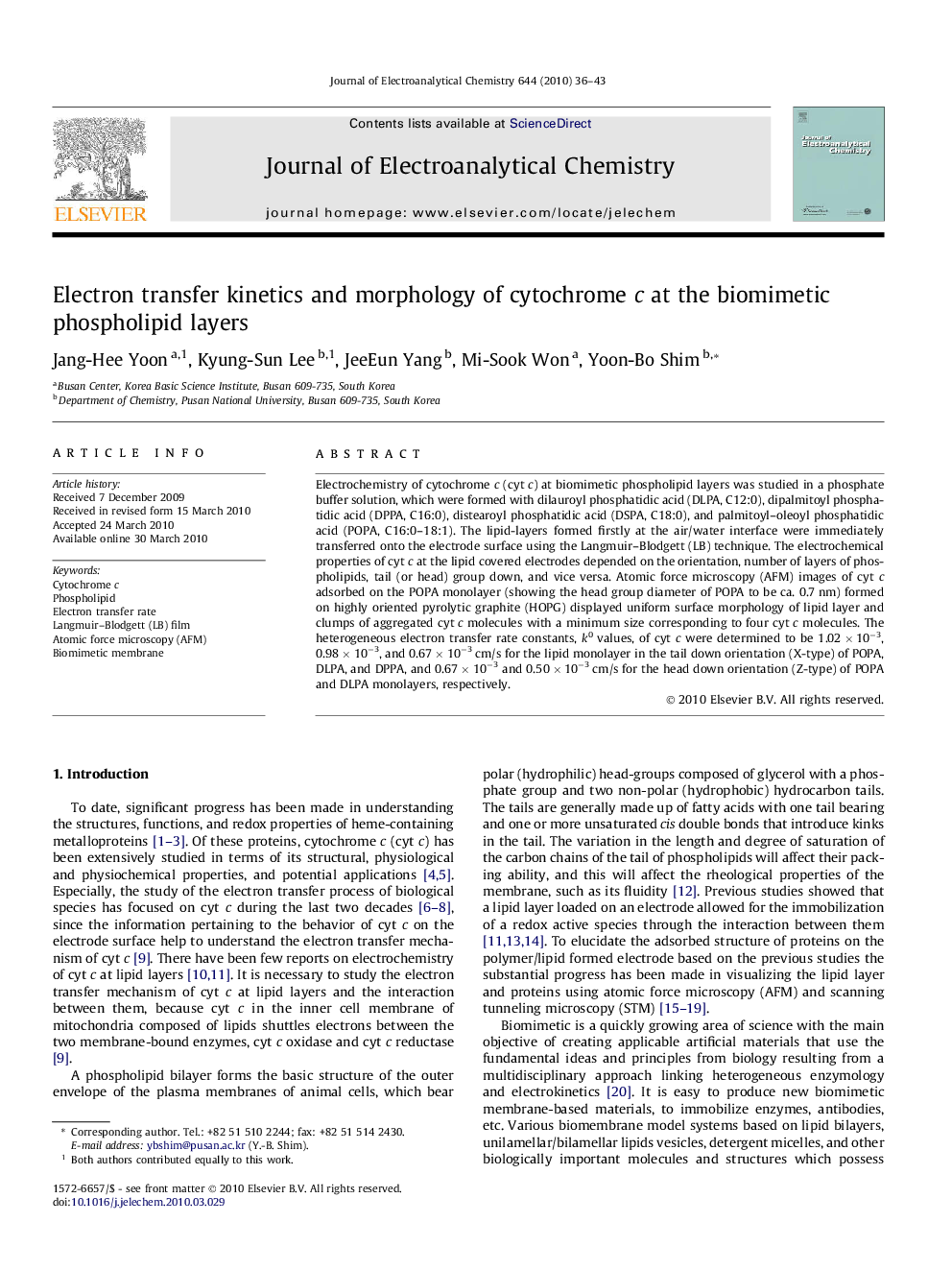| Article ID | Journal | Published Year | Pages | File Type |
|---|---|---|---|---|
| 219948 | Journal of Electroanalytical Chemistry | 2010 | 8 Pages |
Electrochemistry of cytochrome c (cyt c) at biomimetic phospholipid layers was studied in a phosphate buffer solution, which were formed with dilauroyl phosphatidic acid (DLPA, C12:0), dipalmitoyl phosphatidic acid (DPPA, C16:0), distearoyl phosphatidic acid (DSPA, C18:0), and palmitoyl–oleoyl phosphatidic acid (POPA, C16:0–18:1). The lipid-layers formed firstly at the air/water interface were immediately transferred onto the electrode surface using the Langmuir–Blodgett (LB) technique. The electrochemical properties of cyt c at the lipid covered electrodes depended on the orientation, number of layers of phospholipids, tail (or head) group down, and vice versa. Atomic force microscopy (AFM) images of cyt c adsorbed on the POPA monolayer (showing the head group diameter of POPA to be ca. 0.7 nm) formed on highly oriented pyrolytic graphite (HOPG) displayed uniform surface morphology of lipid layer and clumps of aggregated cyt c molecules with a minimum size corresponding to four cyt c molecules. The heterogeneous electron transfer rate constants, k0 values, of cyt c were determined to be 1.02 × 10−3, 0.98 × 10−3, and 0.67 × 10−3 cm/s for the lipid monolayer in the tail down orientation (X-type) of POPA, DLPA, and DPPA, and 0.67 × 10−3 and 0.50 × 10−3 cm/s for the head down orientation (Z-type) of POPA and DLPA monolayers, respectively.
